On arrival, after clearing Immigration, you will be met by our representative and escorted to your hotel.
Delhi, the capital and the third largest city of India, is a fusion of ancient and modern. Standing at the western end of the Gangetic Plain, it is a vibrant city rich in culture, architecture, beautiful gardens and human diversity. Its rich history is reflected in magnificent monuments, in museums and in galleries. It comprises two contrasting yet harmonious parts, Old Delhi and New Delhi. Old Delhi was the capital of Muslim India from the 12th to the 19th centuries, while New Delhi was created by the British Raj and replaced Calcutta as the capital in 1931. It is India’s main international gateway, and the travel hub of Northern India.
Check in the hotel and spend rest of the day at leisure.
Overnight in Delhi



Breakfast at the hotel.
Later proceed for a Combined Sightseeing of Old and New Delhi.
Morning sightseeing of Old Delhi includes the Jama Masjid, Chandni Chowk, Red Fort and Raj Ghat.
Drive Past Red Fort: The red sandstone walls of the massive Red Fort (Lal Qila) stretch some two kilometres and rise to 33 meters above the clamour of Old Delhi. It was a fort and royal residence, and a striking reminder of the magnificent power of the Mughal emperors. (closed on Mondays)
Jama Masjid: This great mosque is the largest in India, built by Shah Jahan between 1644 and 1658. With a courtyard capable of holding 25,000 devotees, the highly decorative mosque has three great gates, four towers and two 40 metre high minarets constructed of alternating strips of red sandstone and white marble.
Chandni Chowk: Chandni Chowk, the bustling oriental bazaar, is next to the Red Fort and Jama Masjid. It was built in 1650 by Shah Jahan's favourite daughter, Jahanara Begum, as a compliment to the imperial habitat, the Red Fort.
Raj Ghat: Set in a lovely garden a black marble platform on the banks of the Yamuna River marks the place where “the father” of the Nation, Mohandas Karamchand Gandhi (popularly known as Mahatma Gandhi) was cremated after being assassinated in 1948.
Afternoon sightseeing of New Delhi includes the Qutab Minar, Humayun’s Tomb, India Gate, Lakshmi Narayan Temple, and a drive past various Government buildings including Parliament House and Rashtrapati Bhawan.
Qutab Minar: An excellent example of Afghan architecture, the Qutab Minar is a soaring, 73 metre high tower of victory. Started in 1193 by Qutab-ud-din Aibak, immediately after the defeat of Delhi's last Hindu kingdom, it was completed by his successors. Gracefully hand-carved for its entire height, it has five distinct storeys, each marked by a projecting balcony and tapers from a 15-metre diameter at the base to just 2.5 metres at the top. The lower three storeys are red sandstone, while the upper two are of marble and sandstone.
Humayun’s Tomb: Built in 1565 A.D. nine years after the death of Humayun, by his senior widow Bega Begam. Refined over the years, this striking and beautiful tomb’s design evolved into the Taj Mahal. Notable feature are the centrally located well proportional mausoleum topped by double dome and the garden squares (chaharbagh) with their pathways water channels.
India Gate: At the eastern end of the Raj Path in New Delhi stands the 42 metre high India Gate. An "arch of triumph it commemorates and bears the names of the 90,000 Indian soldiers who lost their lives during the World War I and North West Frontier (Afghan) campaigns.
Overnight in Delhi

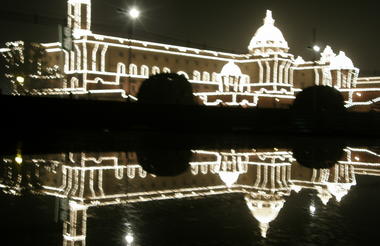
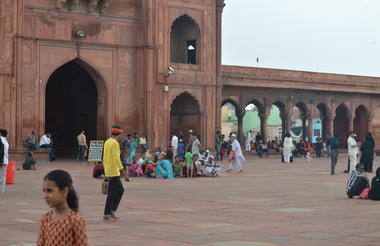
After breakfast, check out of your hotel and you will be transferred to the airport for your flight to Jaisalmeer in Rajasthan.
Founded in 1156, Jaisalmer could be straight out of the Arabian Nights. It is one of India's most exotic and unusual towns, and probably the most perfect Rajput walled city of all. Deep in the Thar Desert, Jaisalmer retains a mediaeval appearance. Within its confines are many havelis and palaces, and a group of notable Jain Temples. The havelis, known for their explicit artworks and carvings, leap from the city’s history, when it was on the camel train routes between India and central Asia. Merchants became very wealthy and built elaborate, extravagant and exquisitely carved homes. Although ages have passed by, the monuments of Jaisalmer have withstood the buffeting winds and heat of the desert environment.
Afternoon visit of Jaisalmer Fort
Jaisalmer Fort, which was built by Rawal Jaisal in 1156. It sits atop Trikuta Hill, commanding views across the desert landscape in all directions. Known as Sonar Quila or the Golden Fort, it seems to rise from the sand, reflecting the desert’s hues in its golden colouring. The fort is in itself a whole township that consists of a palace complex, temples, the havelis of rich merchants and the residential complexes.
Overnight in Jaisalmer
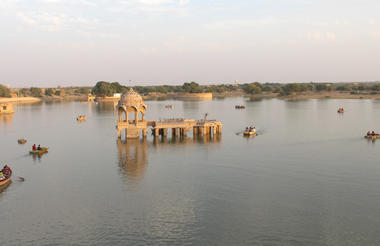

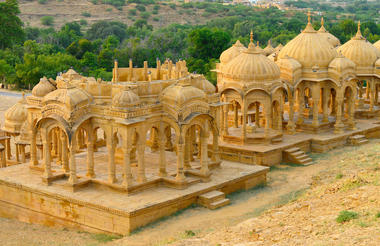
Today drive to Sam Sand Dunes and stay overnight in a camp/tent. In the evening you will have a camp fire in the desert under the open sky with delicious cooked dinner.
Sam Sand Dunes
Not far from the city are the towering sand dunes at Sam, where sunset is a spectacular event, particularly on a camel safari. Camels were the transportation when Jaisalmer was built and riding to and through the dunes reveals superb vistas and a real appreciation of the remote and desolate nature of a desert.
Overnight in Jaisalmer
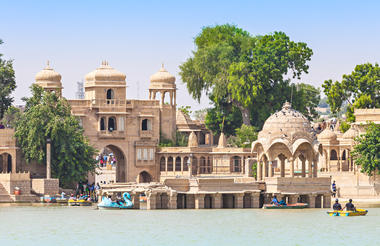
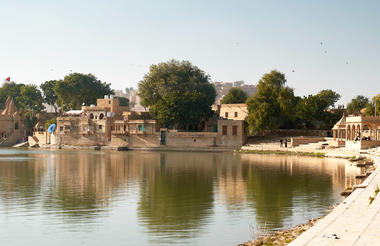
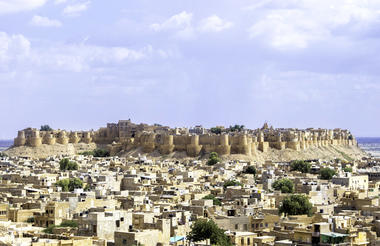
After breakfast, check out and drive to Jodhpur.
Rao Jodha, the chief of the Rajput clan called the Rathores, founded the Bustling desert city of Jodhpur in 1459. It became the centre of the Rathore Kingdom known as Marwar, and lies in the heart of Rajasthan and on the edge of the Thar Desert. The massive fort dominates the city, topping a rocky hill that rises in its centre. The old city is surrounded by a 10 Km wall, from which eight gates give entry and exit.
Check in the hotel.
Afternoon sightseeing of Mehrangarh Fort and Jaswant Thada.
Mehrangarh Fort: Perched on a 125 m high hill the fort was founded in 1459. It is both impressive and formidable in both its location and construction. On the ramparts is a rare collection of canon, and battle scars from canon ball hits can still be seen on one of the gates. Within the fort are magnificent palaces, with meticulously carved panels and latticed windows or "Jarokhas". The chambers have evocative names - Moti Mahal, Phool Mahal, Sheesh Mahal, the Sileh Khana and the Daulat Khana reflect the splendour of a bygone era.
Jaswant Thada: This graceful white marble cenotaph is the memorial to Maharaja Jaswant Singh II, and was built in 1899. The main memorial is built like a temple, with intricately carved marble. Located in stark and rocky terrain it has a secluded and a mystic aura.
Overnight in Jodhpur
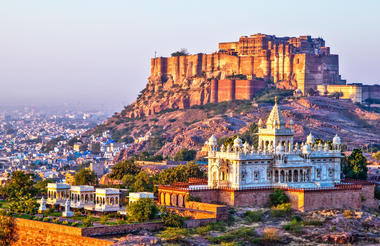
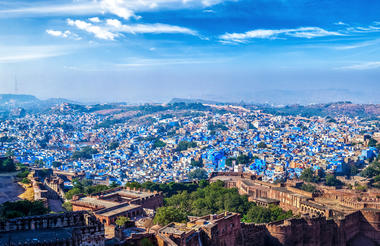
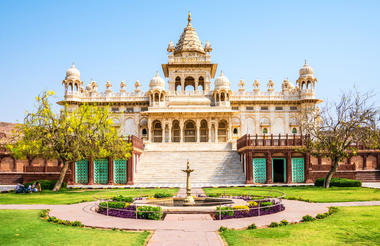
Morning visit Bishnoi Village by Jeep Safari.
The Bishnoi (followers of Guru Jamboji of the 15th century, and his 29 principles) have protected nature for more than 500 years, and are arguably some of the world’s 'Premier Ecologists”. Bishnoi’s are strong lovers of trees and animals and are responsible for the survival of species like the Black Buck Antelope (India's most beautiful antelope and a rare and protected species today). They share a close and special relationship with this endangered animal, wherein the antelope stays close to Bishnoi habitation, never leaving it, and displays complete trust in the Bishnoi people.
Morning city tour of Jodhpur
Afternoon at leisure.
Overnight in Jodhpur
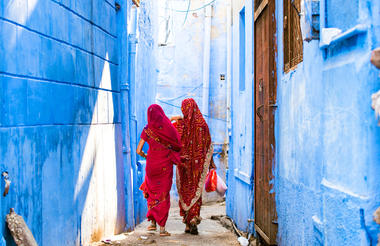
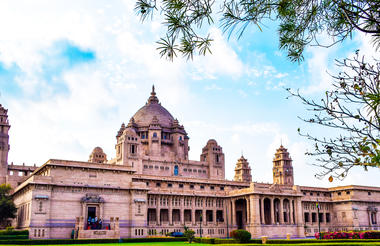
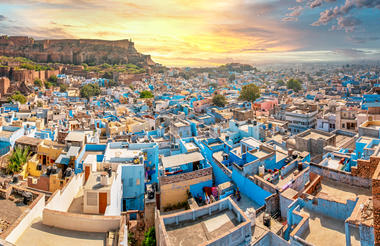
After breakfast, check out and drive to Rawla Narlai.
Look forward to waking up to the sounds of this 17-century village and take in the spiritual energy from the invigorating air descending from the Shiva Temple, lodged deep in a primal cave high on the hill. The village is caught in a time warp, since the Royal family moved back to the Kingdom of Jodhpur. Life has continued much as it was then in Narlai.
Check in the hotel.
Afternoon enjoy a Jeep Safari.
Suggested visit: Evening enjoy a Step well Dinner.
You will be taken on a magical journey from the Rawla through the village streets into the jungle before arriving at the 1100 years old “step well”. The magical setting is brought to life by dimly lit oil lamps. The very private dinner is laid out in a traditional manner. The entire evening is like a secluded sanctuary inspired by the mystical past, bracing Indian spirituality and the unique experience of one being completely with nature.
Overnight in Rawla Narlai


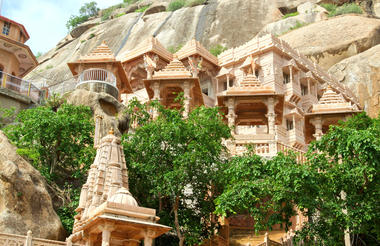
After your breakfast, check out and drive to Udaipur.
Udaipur, the ‘City of Dreams’ also known as the Venice of the East, is interspersed with shimmering lakes, marble palaces and fountains. It is often referred to as the most romantic city in India. It was built in traditional Rajput style in 1559 A.D. by Maharana Udai Singh and was originally the capital of the State of Mewar. It’s beautiful lake setting; graceful architecture, bustling bazaars and historical past make Udaipur rather special.
Arrive Udaipur check in at your hotel & spend rest of the day at leisure.
Overnight in Udaipur
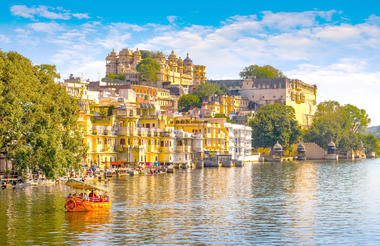
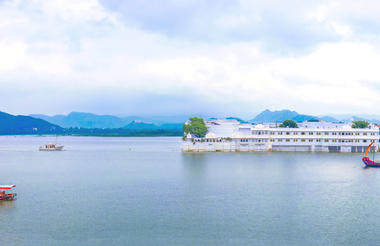
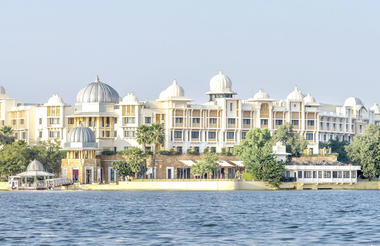
Breakfast at your hotel.
Morning city tour includes the City Palace & Museum, Jagdish Temple and the Sahelion ki Bari (Garden of the Maids of Honour).
The grand City Palace towers over the Pichola Lake. Maharana Uday Singh initiated its construction and succeeding Maharanas added several palaces to the complex but retained a surprising uniformity to the design. The main part of the palace is now a museum displaying a large and diverse array of artefacts, the Crystal Gallery having a breath-taking collection of crystal.
Jagdish Temple: The exterior and the plinth are covered with superb base reliefs of alligators, elephants, horsemen and celestial musicians rising in tiers. Chanting, bells and music can be heard throughout the day.
Sahelion Ki Bari: Known as the Gardens of the Maids of Honour, and built in the 18th century by Maharana Sangram Singh, these delightful gardens are discreet and in impeccable taste.
The fountains of the Sahelion ki Bari function solely by water pressure with no pumps being used.
In the evening, enjoy an exclusive boat ride at Lake Pichola
An evening boat ride on Lake Pichola cruises the city waterfront, bathing Ghats, and out to Jag Mandir. Lake Pichola derives its name from Pichola Village, which was submerged when Maharana Udai Singh enlarged the lake after he founded the city.
Overnight in Udaipur
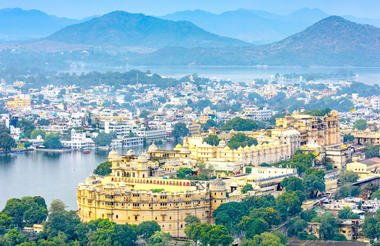
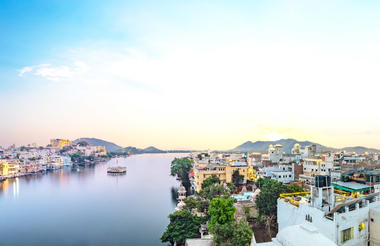
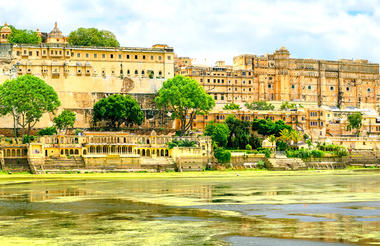
After breakfast, check out and you will drive to Shahpura Bagh.
Situated midway between Jaipur and Udaipur, Shahpura Bagh was the summer residence of the rulers of Shahpura. Legend has it that in 1920’s the king of Shahpura mortgaged the family's private property and jewels to bring water to his people. Today three lakes, along with some 250 smaller lakes, form the heart of a verdant wetland refuge. It is historic, picturesque, and tranquil. An idyllic setting where man and nature have come to understand each other.
Check in at the hotel.
Later proceed to for a half-day tour of Shahpura includes the ancient Ram Dwara temple, and the old city palace, which reveals an integration of Rajput and Mughal architecture. The geometrical symmetry of the baolis is serene.
The Dhikola Fort stands majestically on a hill, with magnificent views surveying a vast expanse of verdant green and lakes.
Overnight in Shahpura Bagh
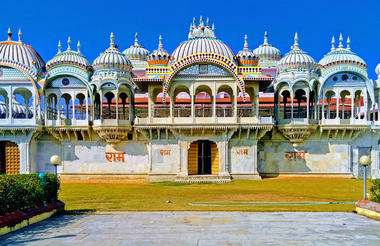
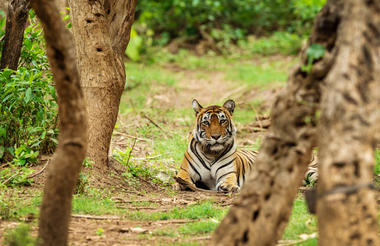
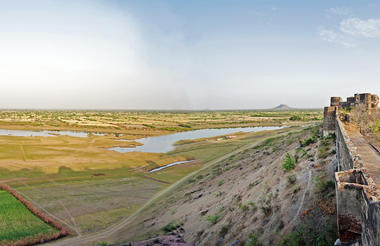
After an early breakfast, check out and drive to Jaipur.
Jaipur is the state capital of Rajasthan and owes its name, planning and foundation to the Maharaja Jai Singh II. In 1727 he decided to move from his hillside fortress at Amber to the plains, and thus Jaipur was conceived.
It is also known as the "Pink City", derived from the pink painted sandstone from which the buildings in the old walled city are constructed. The city is endowed with great architectural elegance and beauty, with magnificent historic palaces, temples, gardens, museums and an amazing observatory built by Jai Singh.
Afternoon, sightseeing of Jaipur City:
A city tour takes you through the bazaars to the Maharaja's City Palace. Part of it is now a fine museum with a comprehensive display of historic artefacts. A relatively small portion of the palace is still used by the Royal family of Jaipur.
Built in the style of a fortified campus, one of the palaces is the Hawa Mahal, known as the Palace of the Winds. Built in 1799 this five-story building looks out over the main street, and was originally for the ladies of the royal household to be able to watch life outside the cloistered Royal Residence.
Nearby is the Jantar Mantar, which has the largest stone and marble crafted observatory in the world. Built by Jai Singh in 1728, it is still equipped with the its original ancient instruments including a very accurate 90-foot sundial. Many of them are still in working condition.
Overnight in Jaipur
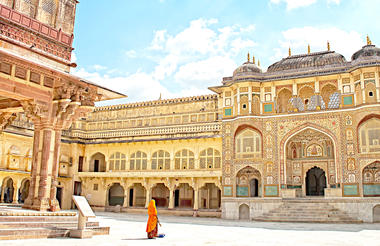


After breakfast, some sightseeing around Jaipur City.
Morning, sightseeing of Amber Fort with elephant ride:
Ten kilometres outside the city, in the rugged hills that surround Jaipur, is the magnificent Amber Fort. An elephant will take you up the steep road to the fort, passing through huge gateways and pillared pavilions. This Rajput Fortress Palace was constructed from 1592 by Raja Man Singh II, and is a superb example of Rajput architecture.
Within the Fort is Jai Mandir (Sheesh Mahal - Palace of Mirrors), renowned for its architectural designs using mirrors of varied shapes and sizes in the intricate design of its wall decoration.
Afternoon at leisure
Overnight in Jaipur


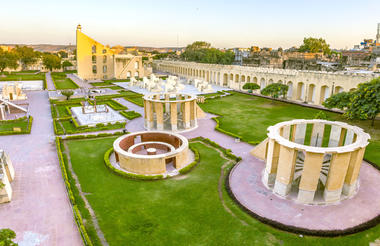
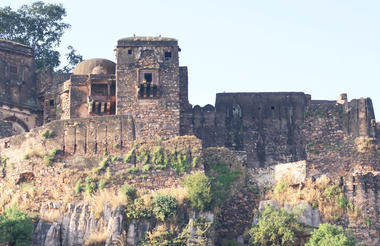
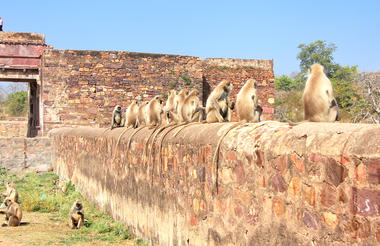
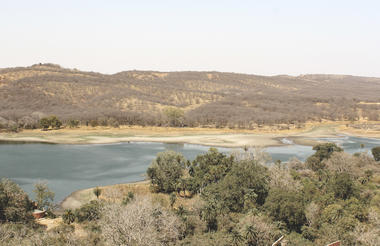
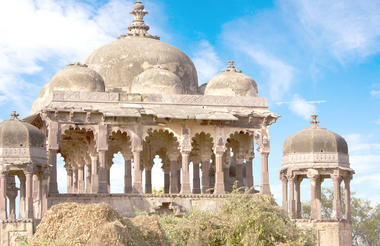
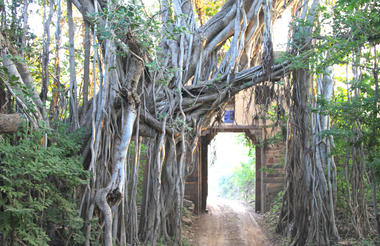
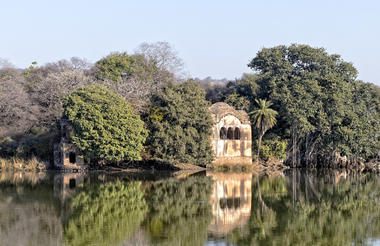
After breakfast, check out of your hotel and proceed overland to Ramathra.
This 17th century fort was granted as a jagir in 1645 AD to Thakur Bhoj Pal by his father the Maharaja of Karauli. The Fort today belongs to Thakur Brijendra Rajpal and his family who are descendents of the founder. Situated on hilltop overlooking a 17 sq kms perennial lake called the Kalisil Lake. According to popular belief, this is a place where lord Ram is supposed to have halted-perhaps enchanted by the peaceful and scenic surroundings before proceeding further down south during his exile.
The unspoiled charm of the area is due to its geographic location. Although it is not far from populated towns but being situated in the interiors, the peace and quiet as well as the environmental purity are undisturbed by urban influences. The atmosphere and its ambience are what visitors enjoy the most. The simplicity of the people dwelling in the sparsely populated villages is endearing and our guests enjoy the leisurely walks through the villages and their interactions with the village folk.
Arrive Ramathra, check in at your hotel & spend rest of the day at leisure.
You can enjoy a variety of activities available such as boating, bird watching, walking tour of Ramathra village, nature walk, trekking to old fort ruins, temple trail etc.
Lunch & dinner at your hotel.
Overnight Ramathra Fort
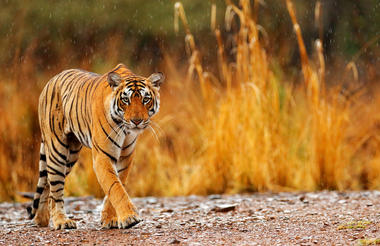
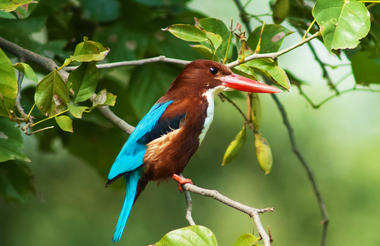
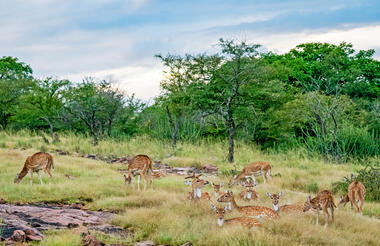
After breakfast you will be driven to the Chambal Sanctuary.
The Chambal Ravines (altitude 200-500m) are the product of centuries of soil erosion by flood and rain waters. They form an incredible maze of intertwining mud cliffs, with tropical dry scrub forest vegetation, that provide shelter for numerous birds, mammals and reptiles.
The National Chambal Sanctuary (NCS) is a 400 km stretch of the river Chambal and up to 6 km wide swath of the ravines on both sides of the river, covering an area of 1235 sq. km.
Check in at your resort.
The Mela Kothi – Chambal Safari Lodge - is an oasis of calm and tranquility nestling in the midst of a sprawling 35 acre heritage plantation, surrounded by family owned farmland. The plantation is part of a much larger area that was used by the Zamindars (feudal Chieftains) of Jarar to conduct their annual cattle fair (Mela).
After decades of neglect, the Mela Kothi and its grounds have been lovingly restored into a charming eco-lodge.
Afternoon river safari
The calm and gentle waters of the Chambal River are best explored on boats and the River Safari provides spectacular opportunities to view the wildlife. The Chambal Safari boatmen are exceptionally skilled at cutting the boat engines, and manoeuvring as close to the birds and animals as possible without disturbing them. Trained naturalists accompany visitors and provide expert information on the Chambal wildlife. The River Safari is a most relaxing, enjoyable and special experience.
Overnight in Chambal
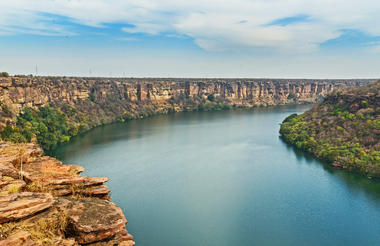
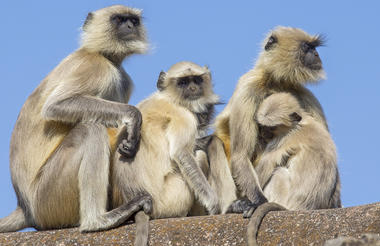

After breakfast, check out & drive to Agra. E
Enroute you will visit the ancient temples at Bateshwar
The ancient temple complex at Bateshwar on the river Yamuna, 10 km from the Chambal Safari Lodge, consists of more than a hundred temples dedicated to the Hindu God Shiva. Referred to as Surajpur in ancient texts, Bateshwar derives its current name from its reigning deity Lord Bateshwar Mahadev (another name for Shiva). The ravines surrounding the temples and river are home to a number of Naga sadhus (snake worshiping ascetics) who have carved out little caves and temples within the mud walls.
Later proceed to Agra. Check in to your hotel
Agra was the capital of the Afghan King Sikandar Lodhi’s empire from 1501. It passed to the Mughal’s soon after and in 1526 Emperor Babar transformed Agra, giving it a unique character and beauty. A great patron of the arts, he made changes to the culture and life-style of his people, which in turn brought forth some of the finest craftsmen, artists, statesmen, warriors and nobility ever seen in this part of India. Over the next few centuries Agra witnessed a rise in pomp and pageantry under the rule of three great Mughal monarchs - Emperors Akbar, Jehangir and Shah Jahan. All lavished their love and riches on this fabled city, making it one of the great centres of art, culture, learning and commerce.
Arrive Agra, check in at the hotel.
Later visit Agra Fort, Itimad-ud-Daulah & Sunset by Taj Mahal.
Agra Fort was built principally as military establishments by Akbar in 1565. However it was partially converted into a palace during Shah Jahan’s reign. Though Akbar built the original structure, his grandsons made many additions. This powerful fortress encompasses the imperial city of the Mughal rulers within its 2.5 kilometre enclosure walls.
Itimad-Ud-Daulah This is the first example of Mughal architecture using marble. It was built by Empress Nur Jahan, in memory of her father Ghias-Ud-Din Beg, between 1622-28. She was daughter-in-law of Emperor Akbar, and he the grandfather of Mumtaz Mahal. A graceful building much smaller than the Taj Mahal is also the first example in Mughal architecture of a building faced entirely in marble. The in-lay work is exquisite.
Sunset visit to the Taj Mahal, which was built by Shah Jahan between 1631 to 1653 in memory of his queen Mumtaz Mahal to enshrine her mortal remains This architectural marvel is a perfectly proportioned masterpiece fashioned from white marble and in-laid with precious and semi-precious stones. It stands testimony to the skill of some 20,000 craftsmen brought together from Persia, Turkey, France and Italy, and who laboured for 22 years to complete this ‘Love Poem in Marble'. (closed on Fridays)
Overnight in Agra
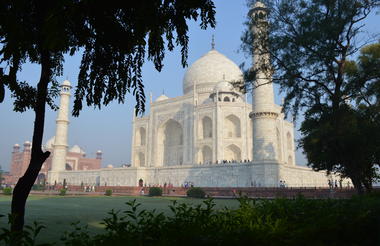
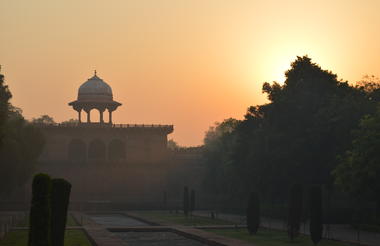
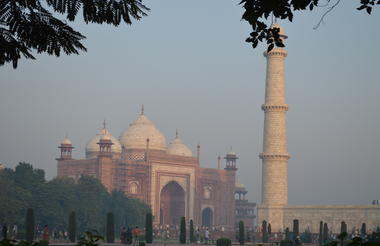
Breakfast at you hotel
Later check out and you will be transferred to the airport for your flight to Varanasi.
Upon arrival, you will be met by our representative and transferred to your hotel.
Varanasi (Also known as Benares and Kashi) standing on the western bank of the sacred River Ganges is the most important Hindu pilgrimage. One of the world’s oldest living cities, its history stretches back into the mists of time. It has been a center of learning for over 2,000 years. At Sarnath, just 10 Km away, Lord Buddha preached his first message of enlightenment 2,500 years ago.
The relationship between the river and the city is the essence of Varanasi. Along the water's edge are bathing and burning Ghats, where devout Hindus come to bath in the sacred waters and the departed are cremated on pyres of sandalwood. The most sacred Ghat is Manikarnika, associated with the Goddess Parvati. In the heart of the city is the majestic Vishveswara Temple, dedicated to Shiva, the Lord of the Universe, who according to legend, after his marriage to Devi Parvati, left his Himalayan abode and came to reside in Kashi with all the gods in attendance.
Check in at your hotel.
Evening tour of the downtown area by Rickshaw:
An intimate experience of Varanasi on a leisurely cycle rickshaw ride through the narrow streets and alleys of the city. In the evening the Ghats and temples are atmospheric, lit with candles and oil-lamps. There will be the opportunity to participate in an Arti Ceremony (collective prayer) and watch the floating Diyas (lamps) on the River Ganges.
Overnight in Varanasi
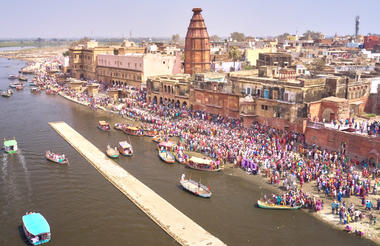
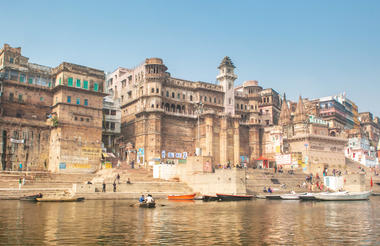
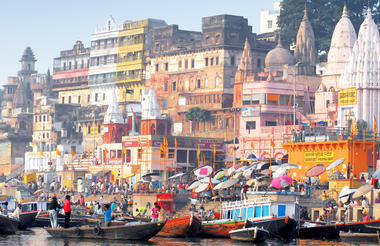
Breakfast at your hotel.
Early Morning- enjoy a boat ride.
The best time to visit the Ghats is at dawn, so an early start today. At this time the city is just waking-up and the light is magical, playing on the water and the buildings. The boat will cruise along the waterfront and the spiritually uplifting activity along the Ghats is viewed. From dawn to dusk the Ghats are thronged by thousands of devotees, who perform their holy rituals in the hope of attaining eternal salvation; Nirvana.
Following boat ride, proceed for walking tour of Old Varanasi visiting the Kashi Vishwanath Temple, Bharat Mata Temple, etc.
Kashi Vishwanath Temple (Golden Temple); In the heart of the city is the majestic Vishveswara Temple, dedicated to Shiva, the Lord of the Universe, who, according to legend, after his marriage to Devi Parvati left his Himalayan abode and came to reside in Kashi with all the gods in attendance. Maharani Ahilya Bai Holkar of Indore built the Temple in its present form in 1776, and has been a living embodiment of India’s timeless cultural traditions and high spiritual values.
Bharat Mata Temple: Dedicated to “Mother India” it was opened by Mahatma Gandhi in 1936. Instead of customary gods and goddesses, the unique aspect of this temple is a perfect relief map of India. It can be viewed from above and from a sunken “room” looking across India from the far south to the Himalayas in the north.
In the afternoon, proceed for Sarnath Excursion.
Situated 10 km from Varanasi, Sarnath is one of the four most important Buddhist pilgrimage centres in India. Having found enlightenment at Bodhgaya, it is where Lord Buddha delivered his first sermon to his disciples, preaching the middle path for attaining 'Nirvana'. Realising the sanctity of the site, emperor Ashoka built fine Stupas and other monuments. The 'Dhamekh' Stupa is perhaps the most remarkable structure. It was at its height in 640 AD when some 1,500 priests were in residence.
Overnight in Varanasi



After breakfast you will be transferred to the airport for your return flight to Delhi.
Check in at your hotel
Remainder of the day at leisure
Overnight in your hotel
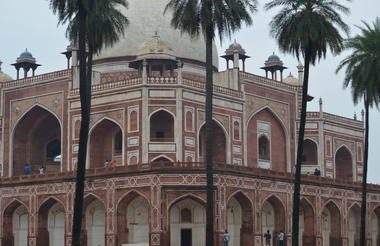
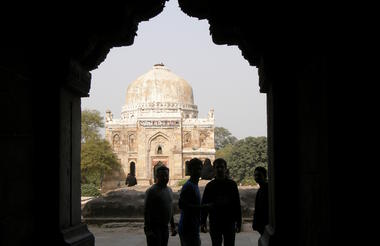
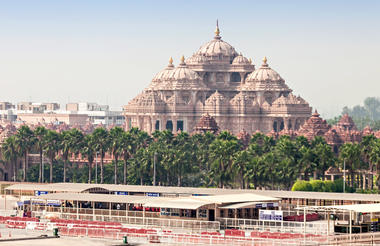
After breakfast you will be transferred to the international airport for your return flight home.






